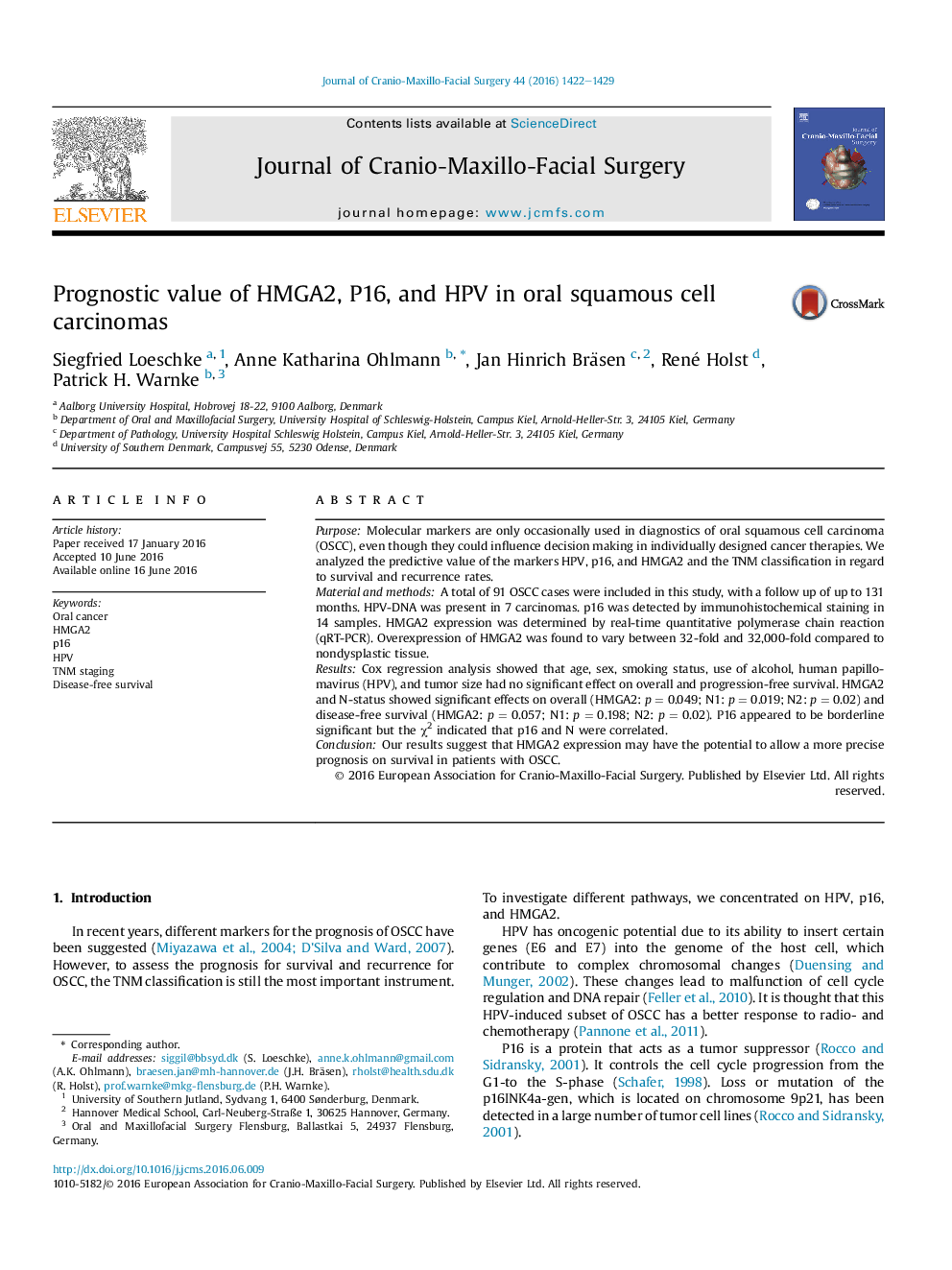| Article ID | Journal | Published Year | Pages | File Type |
|---|---|---|---|---|
| 3142014 | Journal of Cranio-Maxillofacial Surgery | 2016 | 8 Pages |
PurposeMolecular markers are only occasionally used in diagnostics of oral squamous cell carcinoma (OSCC), even though they could influence decision making in individually designed cancer therapies. We analyzed the predictive value of the markers HPV, p16, and HMGA2 and the TNM classification in regard to survival and recurrence rates.Material and methodsA total of 91 OSCC cases were included in this study, with a follow up of up to 131 months. HPV-DNA was present in 7 carcinomas. p16 was detected by immunohistochemical staining in 14 samples. HMGA2 expression was determined by real-time quantitative polymerase chain reaction (qRT-PCR). Overexpression of HMGA2 was found to vary between 32-fold and 32,000-fold compared to nondysplastic tissue.ResultsCox regression analysis showed that age, sex, smoking status, use of alcohol, human papillomavirus (HPV), and tumor size had no significant effect on overall and progression-free survival. HMGA2 and N-status showed significant effects on overall (HMGA2: p = 0.049; N1: p = 0.019; N2: p = 0.02) and disease-free survival (HMGA2: p = 0.057; N1: p = 0.198; N2: p = 0.02). P16 appeared to be borderline significant but the χ2 indicated that p16 and N were correlated.ConclusionOur results suggest that HMGA2 expression may have the potential to allow a more precise prognosis on survival in patients with OSCC.
